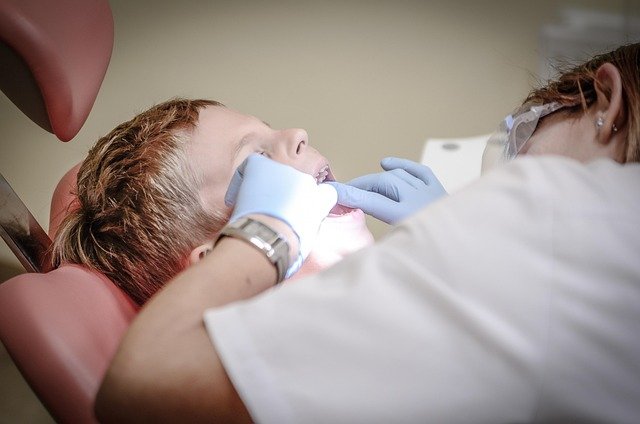Financial Planning for Permanent Tooth Solutions
Replacing missing teeth with permanent solutions has become increasingly accessible in Saudi Arabia, offering individuals the opportunity to restore both function and confidence. Understanding the financial aspects of these procedures is essential for making informed decisions. This comprehensive guide explores the various factors that influence costs, available payment structures, and how to plan effectively for this significant investment in oral health.

Permanent tooth replacement solutions represent a substantial commitment, both in terms of health outcomes and financial planning. Unlike temporary fixes, these solutions integrate with your jawbone to provide stability and longevity that can last decades with proper care. The process typically involves multiple stages, including initial consultations, imaging, surgical placement, healing periods, and final restoration attachment.
What factors influence the cost of permanent tooth solutions?
Several elements determine the overall expense of permanent tooth replacement. The complexity of your case plays a significant role—patients requiring bone grafting or sinus lifts will face higher costs than those with adequate bone density. The number of teeth being replaced directly impacts the total price, as does the type of restoration chosen, whether individual crowns, bridges, or full-arch solutions. Material selection matters considerably; titanium posts are standard, but zirconia alternatives may cost more. The expertise and location of the dental practice also contribute to price variations. In Saudi Arabia, major cities like Riyadh, Jeddah, and Dammam typically have higher rates than smaller urban areas. Advanced technology such as 3D imaging and computer-guided surgery can increase precision but also add to expenses.
How much should you budget for permanent tooth replacement?
In Saudi Arabia, the cost for a single permanent tooth solution typically ranges from SAR 4,000 to SAR 12,000, depending on the factors mentioned above. This estimate includes the surgical post, abutment, and crown. Multiple tooth replacements may offer per-unit savings, with full-arch solutions ranging from SAR 40,000 to SAR 100,000 or more. Preliminary procedures like bone grafting can add SAR 2,000 to SAR 8,000 per site, while sinus lifts may cost between SAR 5,000 and SAR 15,000. Diagnostic imaging and consultations usually range from SAR 500 to SAR 2,000. These figures represent general market observations and can vary significantly based on individual circumstances and provider pricing structures.
| Procedure Type | Provider Type | Cost Estimation (SAR) |
|---|---|---|
| Single Tooth Solution | General Dental Clinic | 4,000 - 7,000 |
| Single Tooth Solution | Specialized Center | 8,000 - 12,000 |
| Multiple Teeth (per unit) | General Dental Clinic | 3,500 - 6,000 |
| Multiple Teeth (per unit) | Specialized Center | 6,500 - 10,000 |
| Full-Arch Solution | General Dental Clinic | 40,000 - 70,000 |
| Full-Arch Solution | Specialized Center | 75,000 - 100,000+ |
| Bone Grafting | Various Providers | 2,000 - 8,000 |
| Sinus Lift | Various Providers | 5,000 - 15,000 |
Prices, rates, or cost estimates mentioned in this article are based on the latest available information but may change over time. Independent research is advised before making financial decisions.
What payment options are available for tooth replacement procedures?
Many dental practices in Saudi Arabia offer flexible payment arrangements to make permanent tooth solutions more accessible. Upfront payment often comes with discounts ranging from 5% to 15%, making it the most economical option for those with available funds. Installment plans are widely available, allowing patients to spread costs over 6 to 24 months, sometimes interest-free depending on the provider and total amount. Some clinics partner with third-party financing companies that offer longer-term loans with competitive interest rates. Medical credit cards designed specifically for healthcare expenses provide another avenue, often featuring promotional periods with reduced or zero interest. Certain employers in Saudi Arabia include dental benefits in their health insurance packages, which may cover a portion of the procedure. It is worth checking with your insurance provider about coverage limits and requirements. Additionally, some patients choose medical tourism, combining treatment with travel to facilities offering competitive pricing, though this requires careful research regarding quality and follow-up care.
How can you effectively plan financially for permanent tooth solutions?
Successful financial planning begins with obtaining detailed treatment plans from multiple providers. Schedule consultations with at least three dental practices to compare approaches and pricing structures. Request itemized quotes that break down each component—consultation fees, imaging, surgical procedures, materials, and restoration costs. This transparency helps identify where costs accumulate and where potential savings exist. Create a dedicated savings plan if immediate treatment is not urgent, setting aside monthly amounts toward your goal. Consider opening a health savings account if available through your employer, as these often provide tax advantages. Review your insurance policy thoroughly to understand what percentage of costs might be covered and whether pre-authorization is required. Factor in additional expenses beyond the procedure itself, including time off work for surgery and recovery, transportation to appointments, and potential medications. Build a contingency fund of 10-15% above the quoted price to handle unexpected complications or additional procedures. Compare the long-term value against alternatives; while permanent solutions have higher upfront costs, they often prove more economical over time compared to repeated temporary fixes.
What questions should you ask providers about costs?
Before committing to treatment, clarify several financial aspects with your chosen provider. Ask whether the quoted price is comprehensive or if additional fees might apply for consultations, imaging, anesthesia, or follow-up visits. Inquire about the warranty or guarantee policy—many reputable providers offer coverage for a specified period if complications arise. Understand the payment schedule: when deposits are due, what percentages are required at each treatment stage, and whether refunds are possible if you need to postpone or cancel. Request information about the specific materials and brands being used, as quality variations exist in both posts and restorations. Discuss what happens if additional procedures like bone grafting become necessary after initial assessment—will you receive advance notice and updated pricing? Ask about the provider’s experience level and success rates, as higher expertise often correlates with better outcomes and fewer costly complications. Finally, confirm whether the practice accepts insurance and if they will assist with claims submission and documentation.
Conclusion
Financial planning for permanent tooth solutions requires careful consideration of multiple factors, from understanding cost components to exploring payment options that align with your budget. While the investment may seem substantial, the long-term benefits of restored function, improved oral health, and enhanced confidence often justify the expense. By researching thoroughly, comparing providers, asking detailed questions, and creating a realistic savings or payment strategy, you can make this important health decision with confidence and financial clarity. Remember that prices and options vary considerably across Saudi Arabia, making personalized consultations essential for accurate planning.




